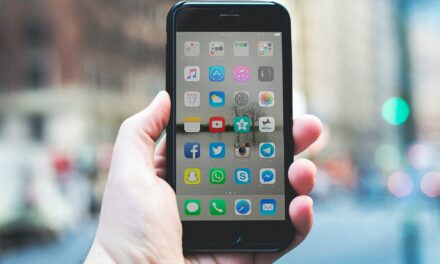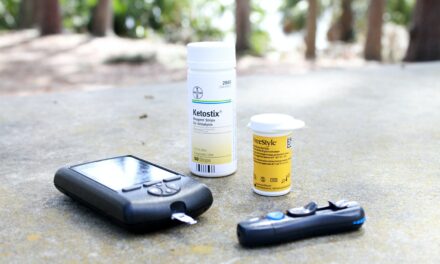Technology is increasingly centre stage in healthcare, especially in the aftermath of the COVID-19 pandemic. While technology can radically transform healthcare, the big question is how to deploy it in a way that is beneficial, cost-effective, and, above all, safe. Health tech is a broad area, ranging from telemedicine, to NHS IT systems, to application of advanced technologies such as robotics and molecular diagnostics, and artificial intelligence. What’s needed are considered and targeted approaches, involving healthcare staff and patients at every stage, to design technological solutions for the most urgent problems in the NHS.
Telemedicine
Technology has differing potential applications depending on the clinical setting – outpatient or inpatient, specialist or generalist. Remote consultation and monitoring can have great utility in outpatient specialist care, as shown by the pandemic, during which it has been widely and successfully deployed. Many colleagues of ours have commented that remote consultations are efficient and don’t result in any discernible difference in outcome compared to face-to-face clinics, observations which are supported by emerging research. Telemedicine is effective for outpatient clinics as they usually focus on specific conditions, which patients are frequently knowledgeable about, which makes digital symptom reporting tools, provided by companies such as Huma, useful for both patient and clinician.
Where patients have undifferentiated presentations (i.e. they don’t have a known diagnosis and may be unsure how they’re unwell), in generalist medical settings, greater caution is needed in the shift to telemedicine. The rapid wholesale shift of GP services to digital has been a success story of the pandemic, but may not be fully sustainable as general practice often operates on noticing things that patients don’t mention.
In general, the suitability of telemedicine is dictated by the medical presentation (for example for dermatological complaints, photo and video are effective for facilitating diagnosis), and patient demographic. What strikes us is how difficult it is sometimes, even during in-person encounters, to get the information necessary to form a clinical judgement, often due to patients having visual/hearing impairments, medical conditions like dementia, or language barriers. This would be much harder in remote consultations, where opportunity for examination is limited, with resulting diagnostic uncertainty creating safety risk for patients and medicolegal risk for practitioners, an ongoing concern in the profession. Ultimately, deployment should be guided by individual specialties and disciplines, with input of professional bodies and medical Royal Colleges being critical.
IT systems
The shift towards complete electronic health records (EHRs) is well underway in NHS Trusts across the country and has long been the norm in general practice. A useful further innovation is the mobile EHR, a good example being the Streams App by Google Health, which has been trialled in our NHS Trust. It’s helpful in emergency situations when there might be no computer nearby and allows doctors to take breaks as they can continue monitoring when off the ward. Remote access to EHRs should also be made more widely available. During COVID, this has allowed people to work offsite, and those shielding to continue working. However, beyond COVID, this could also transform healthcare jobs, reducing overtime (on busy shifts we often need to stay late to document) and allowing more flexible working, including work-from-home. It’s a simple way to make healthcare careers, subject to chronic workforce shortages, more attractive.
Importantly digital patient records need to be joined up, between secondary, primary and social care, and between localities, an ambition recognised in the NHS Long Term Plan. This would make a huge difference to ease of work in GP, improving continuity of care, including follow up after hospital attendances, allowing more expedient discharges and ambulatory care.
Overhaul of outdated communications systems within the NHS is vital. The Health Secretary Matt Hancock has long recognised that, and has been driving initiatives to phase out pagers and fax machines. Text-based communication systems, e.g. a mobile app, between teams and specialties, and auxiliary services (such as radiology/laboratory departments), are needed in hospitals. This would save much time spent on hold on phones, or calling switchboard for lack of contact information, freeing up junior doctors’ time for patient care and training. Consideration should also be given towards establishing digital platforms for patients and their families to communicate with health professionals. Many people who’ve had experience of hospitals know how difficult it is to catch the right person. Given that many complaints in the NHS are rooted in communication problems, this has to be an urgent priority.
Artificial Intelligence
With increasingly large amounts of data generated, applications of AI in healthcare has taken off in recent years. As part of our research at Imperial, we’re involved in developing machine learning solutions in oncology. Currently most algorithms are developed on well-characterised, uniform datasets, so are most useful in specialist care settings, where patients have detailed, well-curated data. There’s also great potential benefit in these settings; individual clinicians and centres may not encounter many cases of specialist conditions so AI, which can combine and learn from multicentre and multinational data, is valuable in gaining greater understanding of the aetiology of these diseases and guide decision making in treatment. That’s perhaps one of the key uses of AI in healthcare – the generation and augmentation of clinical guidelines that are personalised and adaptable through continuous learning. Achieving these goals relies on large datasets, and to this end, the NHS has an unparalleled advantage as one of the biggest healthcare organisations in the world with representation in all demographics. We must leverage this and become a global leader, exporting our technologies and algorithms worldwide.
Finally, who should lead the technological revolution in healthcare? There’s increasing recognition of the need for digital education for healthcare staff, highlighted in HEE’s Topol Review, and it’s good to see the emphasis on developing technological leaders from within healthcare professions. However, there’s a trade-off between these career development opportunities and depletion of clinical workforce, and as doctors on the ground, it’s obvious that this is not insignificant. We’ve seen many highly talented colleagues attracted towards alternative routes in medical research or health tech (often because the work offers more variation than clinical practice) but this sort of exodus presents both a challenge to service planning and financial burden to the NHS, which invests in clinical education and training. A solution is to integrate engagement with technology within day-to-day work schedules, whether it be participating in or leading digital education and training, or involvement in research or clinical trials. There should also be new models for collaborative working between healthcare professionals, engineers and computer scientists in research and industry, with shared outcomes e.g. publications/patents, to drive forward translation and upscaling of innovative technologies.




